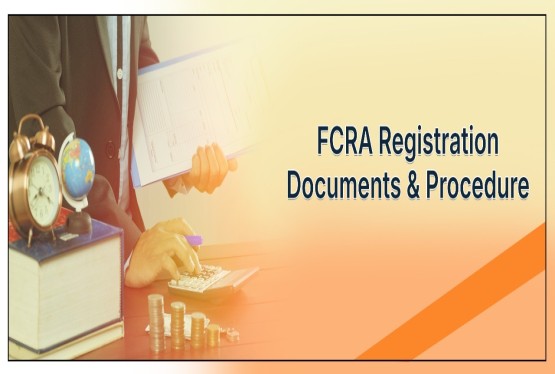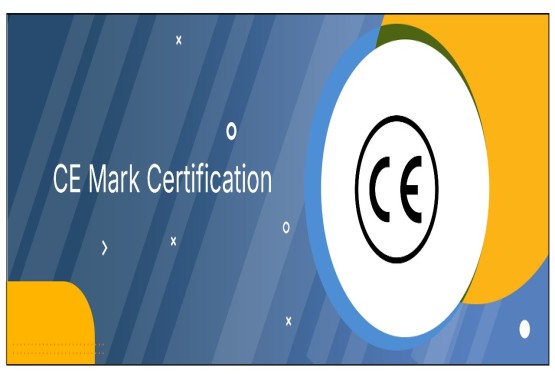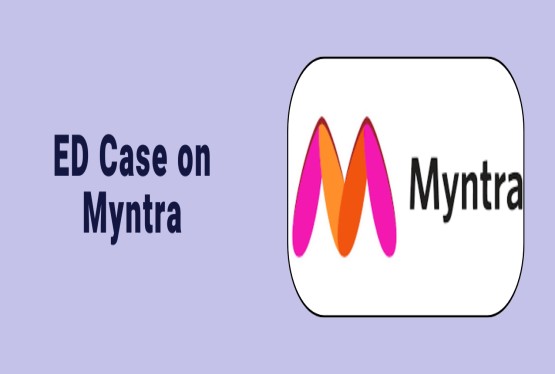The Double Tax Avoidance Agreement (DTAA) is a treaty signed between two countries to help taxpayers avoid paying tax on the same income in both countries. One of the key objectives of DTAA is to make a country an attractive destination for investment and employment, especially for Non-Resident Indians (NRIs) and global professionals. In the context of India and the United States, the DTAA between India and USA ensures that individuals and companies who earn income in both countries are not subjected to double taxation.
DTAA between India and USA is particularly important for individuals who reside in one country but earn income in the other. For example, Mr. X, a resident of India working in the United States, earns a salary there. The U.S. government imposes a Federal Income Tax on the salary. However, since Mr. X is a resident of India, the Indian government may also seek to tax the same income. To prevent this overlap, DTAA provides relief by either exempting the income in one country or allowing credit for the tax paid in the other.
Purpose of the DTAA between Indian and USA
The primary goal of the DTAA between India and USA is to reduce the tax burden on individuals and entities by providing relief from being taxed twice on the same income. This treaty helps encourage cross-border trade and investment by eliminating tax barriers. The agreement aims to:
-
Provide relief from double taxation.
-
Prevent tax evasion.
-
Promote the exchange of information between the two countries.
-
Encourage mutual economic cooperation.
Scope and Applicability of DTAA between Indian and USA
The DTAA between India and USA applies to residents of either or both contracting states, i.e., India and the United States. It applies to a variety of taxes, and understanding which taxes are covered under this agreement is essential.
Taxes Covered in the United States
The agreement primarily applies to the Federal Income Tax as imposed by the Internal Revenue Code (IRC). However, the following taxes are not covered:
-
Accumulated Earnings Tax: Levied on companies retaining excessive earnings instead of distributing them as dividends.
-
Personal Holding Company Tax: Imposed on closely held corporations with undistributed income.
-
Social Security Taxes: Applicable to employees and self-employed individuals.
-
Excise Taxes on Insurance Premiums and Private Foundations: Covered only if the risks are not re-insured with non-exempt entities.
Taxes Covered in India
The DTAA applies to:
-
Income Tax including surcharges.
-
Surtax (excluding tax on undistributed income of companies).
Determining Residential Status
The DTAA applies to individuals or entities that are residents of one or both of the contracting states. A resident refers to someone liable to pay tax due to their domicile, residence, place of management, or similar criteria.
If a person qualifies as a resident of both countries, the following tie-breaker rules apply:
-
Permanent Home: The country where the individual has a permanent home will determine residency.
-
Centre of Vital Interests: If there is a permanent home in both or neither states, the country where personal and economic ties are closer is considered.
-
Habitual Abode: If the above is not determinable, the country where the individual stays more frequently is considered.
-
Nationality: If habitual abode exists in both, the individual’s nationality is considered.
-
Mutual Agreement: If still unresolved, the competent authorities of both countries will decide by mutual agreement.
Taxability of Income Types Under DTAA
The DTAA between India and USA lays down specific provisions regarding different types of income. Here’s how each is treated:
Income from Immovable Property
Income from real estate is taxed in the country where the property is located. For instance, if a U.S. resident earns rental income from property in India, that income is taxable in India. This includes income from agriculture, forestry, leasing, or other use of immovable property, even when used for business or independent services.
Dividend Income
If a U.S. company pays a dividend to an Indian resident, the dividend is taxable in India. However, the United States may also tax this income. To avoid excessive tax, the treaty limits the withholding tax:
-
15% if the beneficial owner is a company holding at least 10% of voting stock.
-
25% in all other cases.
Interest Income
Interest earned in one contracting state and received by a resident of the other may be taxed in both countries. However, limits apply:
-
10% if paid to banks or financial institutions.
-
15% in all other cases.
Capital Gains
Capital gains are taxed based on domestic laws, with exceptions for gains from ships and aircraft in international traffic. For example, if a U.S. resident sells property located in India, Indian tax laws will apply.
Payments to Professors, Teachers, and Research Scholars
Educators and scholars moving from India to the U.S. can be exempted from tax for a maximum of two years if:
-
The engagement is not more than two years.
-
They were residents of India before the visit.
-
In the case of research, the work must serve public interest, not private benefits.
Relief from Double Taxation
Both India and the U.S. provide mechanisms for tax relief under DTAA:
In the United States
U.S. residents can claim credit for Indian tax paid on foreign income. If a U.S. company owns at least 10% of an Indian company’s stock, it can also claim a credit for taxes paid by the Indian company.
In India
Indian residents can claim a deduction for taxes paid in the U.S., but the deduction cannot exceed the Indian tax payable on that foreign income.
For example, if an Indian resident earns income in the U.S. and pays tax there, India will deduct the tax paid in the U.S. from the Indian tax liability. However, this is limited to the Indian tax amount on that income.
Reporting DTAA Benefits in Income Tax Returns
Indian taxpayers must disclose foreign income and assets when filing returns. Several schedules and forms are involved in this process:
Schedule FSI (Foreign Source Income)
Taxpayers must provide details such as:
-
Country code where the income is earned.
-
Taxpayer Identification Number.
-
Amount of foreign income.
-
Taxes paid abroad.
-
Income tax payable in India.
-
Applicable DTAA Article.
Schedule TR (Tax Relief)
Once FSI details are filled, the system automatically updates Schedule TR. This shows the relief allowed for double taxation.
Schedule FA (Foreign Assets)
If the taxpayer holds foreign assets, these must be declared under Schedule FA. This includes bank accounts, stocks, and immovable property.
Form 67
To claim tax relief for taxes paid abroad, taxpayers must file Form 67 before submitting their income tax return. This form includes:
-
Details of foreign income.
-
Amount of foreign tax paid.
-
The DTAA Article claimed for relief.
Conclusion
The DTAA between India and USA plays an important role in simplifying tax obligations for individuals and companies earning income in both countries. By avoiding double taxation and offering structured relief mechanisms, the agreement fosters better economic cooperation, facilitates smoother international transactions, and ensures fair taxation.
For NRIs, multinational companies, and global professionals, knowing about the provisions of the DTAA between India and USA is important for efficient tax planning. Proper compliance, timely disclosure, and the correct use of applicable forms can help in availing the full benefits of the treaty, while also ensuring that one stays on the right side of the law.
If you have any queries or need any support connect with Compliance Calendar LLP experts through email at info@ccoffice.in or Call/Whatsapp at +91 9988424211.
FAQs
Q1. What is the purpose of the DTAA between India and the USA?
Ans. The primary purpose of the Double Tax Avoidance Agreement (DTAA) between India and the USA is to prevent individuals and companies from being taxed twice on the same income in both countries. It ensures that taxpayers do not suffer from double taxation and provides relief either through tax exemption in one country or tax credit for taxes already paid in the other country. This treaty helps to promote cross-border economic activities, trade, and investment.
Q2. Who is eligible to claim benefits under the DTAA between India and the USA?
Ans. Only residents of the contracting states—India and the United States—can claim benefits under the DTAA. A resident is someone who is liable to pay tax in that country due to their domicile, residence, citizenship, or other criteria. In cases where a person qualifies as a resident of both countries, their residential status is determined based on factors like the location of their permanent home, center of vital interests, habitual abode, and nationality.
Q3. How is dividend income taxed under the DTAA between India and the USA?
Ans. Under the DTAA, dividend income paid by a company resident in one country to a resident of the other country is taxable in both countries, but with certain limits. If the beneficial owner of the dividend is a company holding at least 10% of the voting stock, the maximum withholding tax rate is 15%. In all other cases, the rate is capped at 25% of the gross dividend. The recipient can then claim a tax credit in their resident country for the tax paid.
Q4. How can an Indian resident claim tax relief for income earned in the USA?
Ans. An Indian resident earning income in the USA can claim tax relief in India by filing Form 67 before submitting their Income Tax Return (ITR). The income must also be reported in Schedule FSI (Foreign Source Income) and Schedule TR (Tax Relief) in the ITR. The relief will be allowed as a deduction for taxes paid in the USA, subject to the condition that the deduction does not exceed the amount of Indian tax payable on the same income.
Q5. Is rental income from property in India taxable for a US resident under DTAA?
Ans. Yes, under the DTAA, income from immovable property (such as rent) is taxable in the country where the property is located. So, if a US resident earns rental income from property situated in India, the income is taxable in India. The taxpayer may also report this income in the USA and claim credit for the tax paid in India, as per US tax laws.
Q6. What documents are required to claim DTAA benefits?
Ans. To claim DTAA benefits, a taxpayer usually needs the following documents:\n- Form 67 (for Indian residents claiming foreign tax credit)\n- Tax Residency Certificate (TRC) from the country of residence\n- Proof of tax paid abroad (tax return or tax payment receipt)\n- Income details and DTAA Article reference in the ITR (Schedules FSI and TR)\nThese documents support the claim for relief and must be filed accurately to avoid rejection or penalties.
Q7. Are professors and research scholars covered under the DTAA between India and the USA?
Ans. Yes, the DTAA provides a special provision for professors, teachers, and research scholars. If an Indian resident moves to the USA for teaching or research at a recognized institution, they may be exempt from paying tax in the USA for up to two years. This exemption applies only if the engagement is not for more than two years, and the individual was a resident of India immediately before the visit. For research scholars, the research must be in public interest and not for private gain.












































































_crop10_thumb.jpg)







_Rules,_2025_learn_crop10_thumb.jpg)
























































































_crop10_thumb.jpg)








 in BIS FMCS_learn_crop10_thumb.jpg)










_crop10_thumb.jpg)















_crop10_thumb.jpg)





_Code C-888_learn_crop10_thumb.jpeg)
_learn_crop10_thumb.jpg)
































































_Certificate_learn_crop10_thumb.jpg)

_Certificate_(1)_crop10_thumb.jpg)















_learn_crop10_thumb.jpg)

_crop10_thumb.jpg)


















_Scheme_learn_crop10_thumb.jpg)


_learn_crop10_thumb.jpg)










